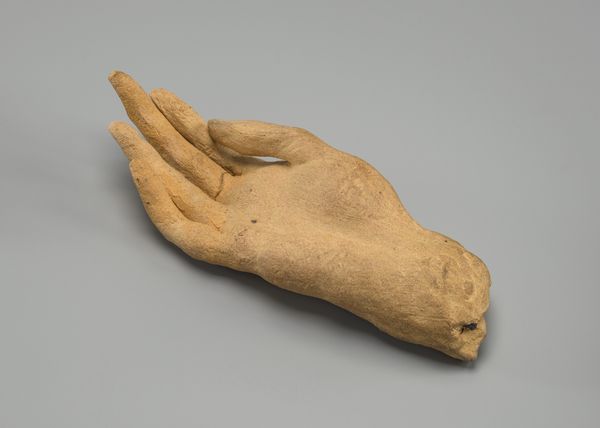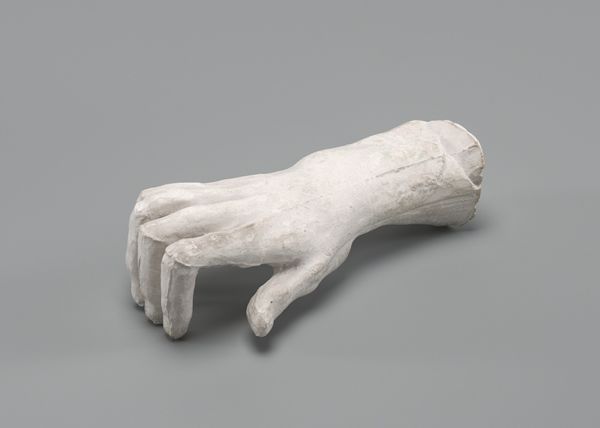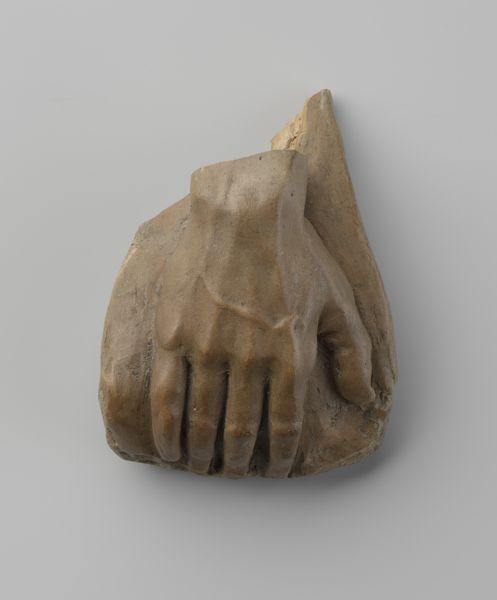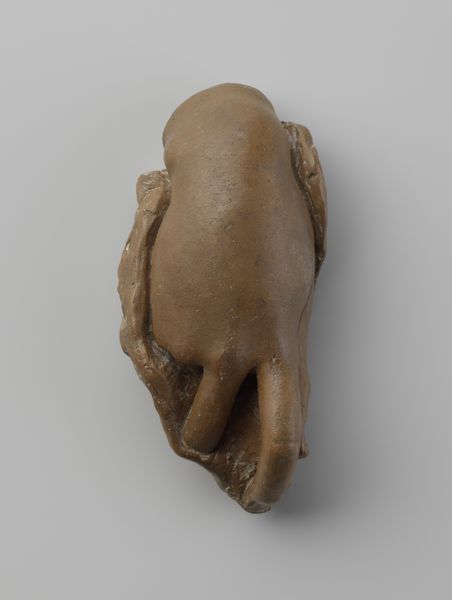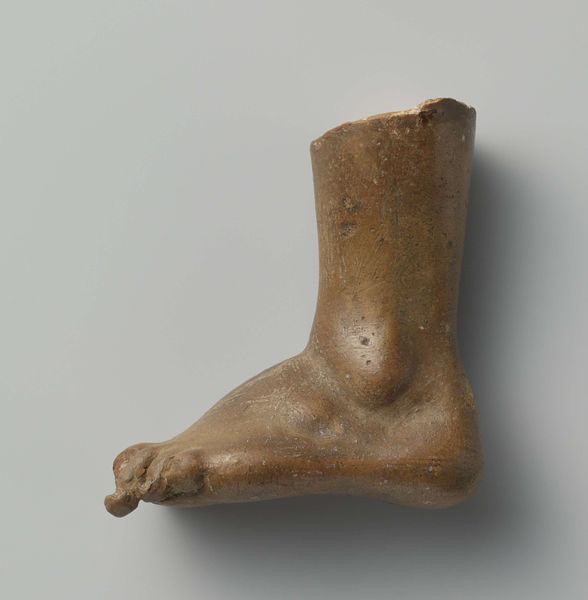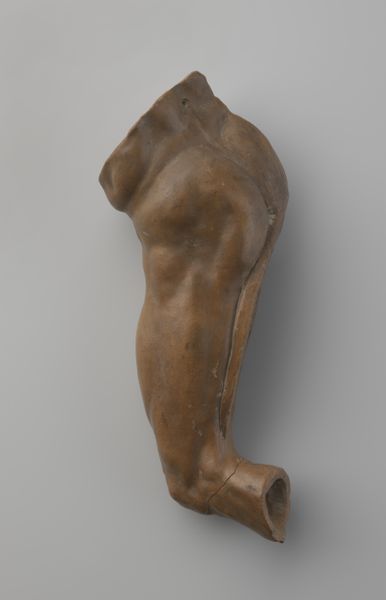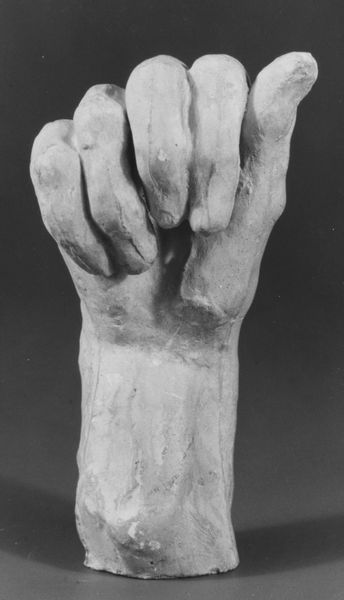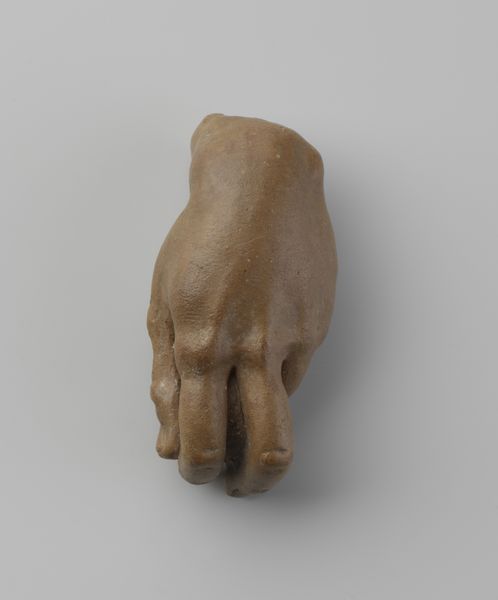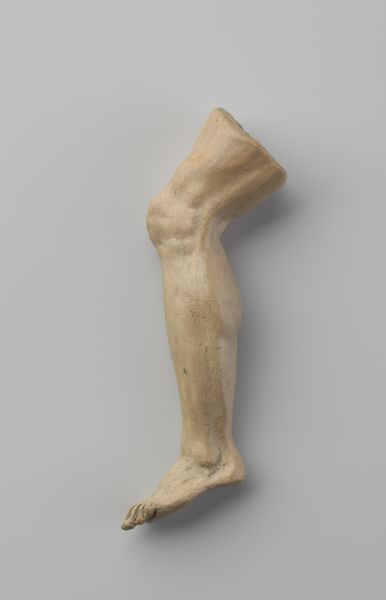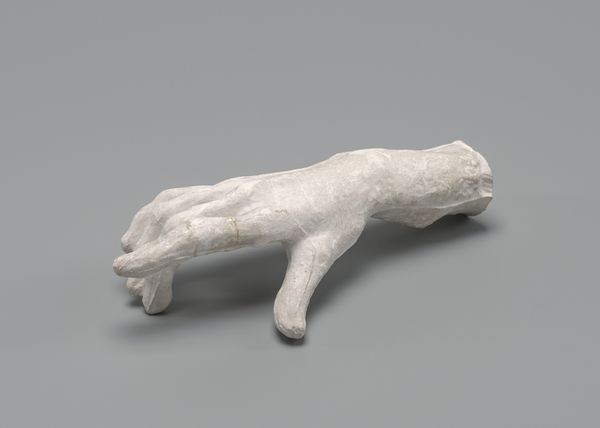
#
hand rendered
#
3d sculpting
#
3d printed part
#
rounded shape
#
3d character model
#
sculptural image
#
curved surface
#
watercolour illustration
#
3d character modeling
#
nature closeup
Copyright: Rijks Museum: Open Domain
Curator: Looking at it, there’s a certain cold detachment despite being such an intimate body part, wouldn’t you say? Editor: I find its strangeness immediately compelling. We're looking at "Study Models of Parts of the Body," created around 1560-1570 by Johan Gregor van der Schardt, here at the Rijksmuseum. A collection of model hands used for…? Curator: Educational purposes, presumably. One might have even called this ‘scientific’ during the late Renaissance. But for whom, and to what end? Was it meant for medical students learning anatomy or artists honing their skills in portraying the human form? The hand here holds no object, it doesn’t grasp, signal or point, its existence seems primarily instructional. Editor: Interesting thought. Yet these isolated hands remind me of votive offerings left at religious shrines. People often offered representations of afflicted body parts, hoping for healing. Perhaps there's a deeper psychological current here, a focus on the vulnerabilities and potential frailties inherent in the body itself. Curator: I hadn’t considered that religious parallel, but I suppose body parts are also symbols within those iconographies. Although detached from context and the human form in this model, I perceive a degree of coldness that is striking given it is rendered so naturally. The surface has the mottled quality of the clay body. What is conveyed? Objectivity? Detachment? Editor: I see both a cold detachment and an intense focus on detail, revealing a deeper understanding of humanity than if it were merely part of a full-sized and idealized sculpture. Curator: Perhaps it's both. Seeing these objects certainly makes you wonder about the various applications—artistic, scientific, or even spiritual—that people might ascribe to them. Editor: A true convergence of art and historical artefact – certainly provides fertile ground for both our reflections.
Comments
rijksmuseum about 2 years ago
⋮
This group of small models of parts of the body are carefully copied after famous sculptures, in particular by Michelangelo, in Florence and Rome. They came from the workshop of the Nijmegen sculptor Johan Gregor van der Schardt, who had a successful career in Italy, Nuremberg, and Copenhagen. They are extremely rare examples of the, in part autograph, study material of a 16th-century sculptor.
Join the conversation
Join millions of artists and users on Artera today and experience the ultimate creative platform.
